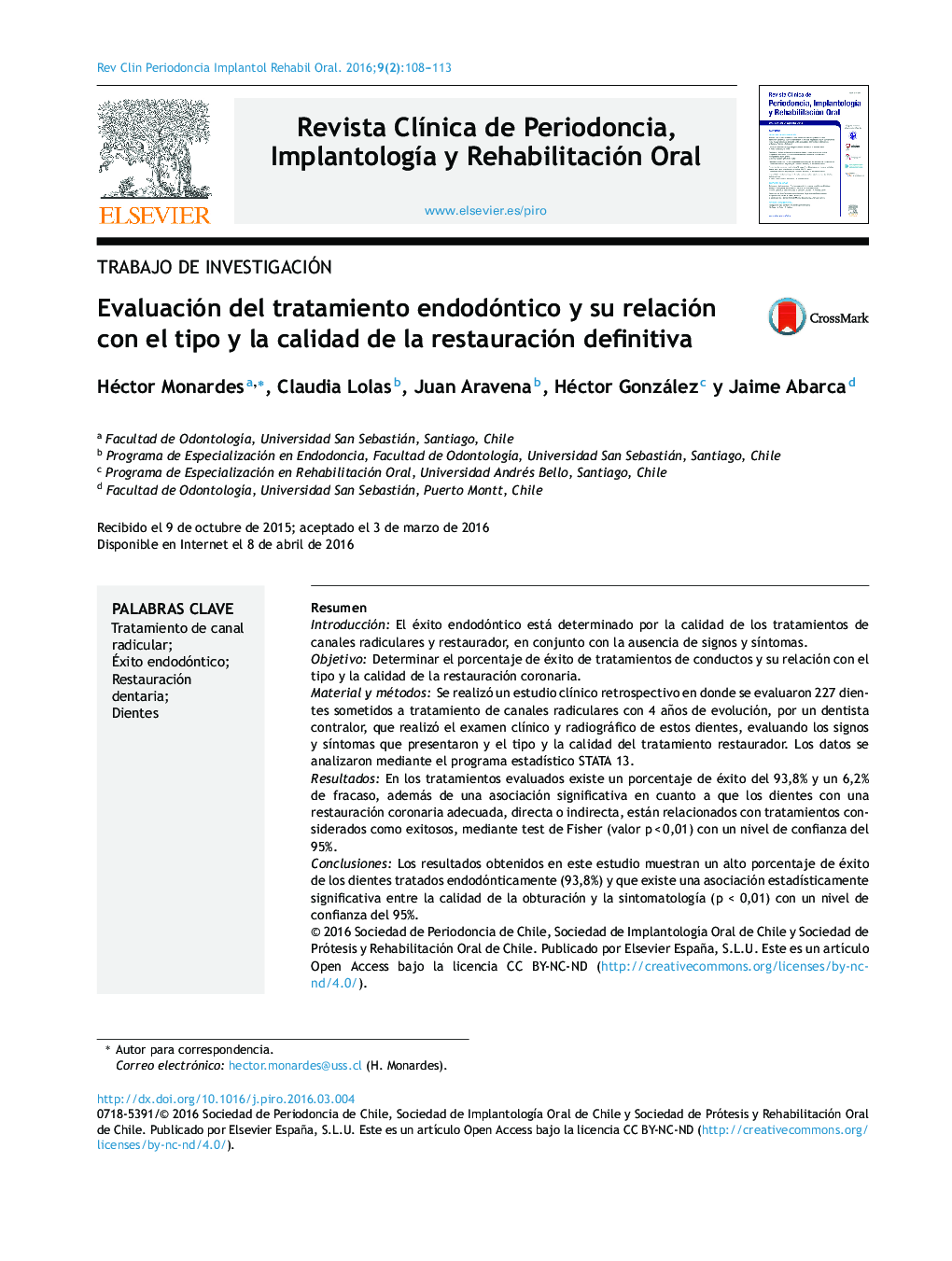| Article ID | Journal | Published Year | Pages | File Type |
|---|---|---|---|---|
| 3172307 | Revista Clínica de Periodoncia, Implantología y Rehabilitación Oral | 2016 | 6 Pages |
ResumenIntroducciónEl éxito endodóntico está determinado por la calidad de los tratamientos de canales radiculares y restaurador, en conjunto con la ausencia de signos y síntomas.ObjetivoDeterminar el porcentaje de éxito de tratamientos de conductos y su relación con el tipo y la calidad de la restauración coronaria.Material y métodosSe realizó un estudio clínico retrospectivo en donde se evaluaron 227 dientes sometidos a tratamiento de canales radiculares con 4 años de evolución, por un dentista contralor, que realizó el examen clínico y radiográfico de estos dientes, evaluando los signos y síntomas que presentaron y el tipo y la calidad del tratamiento restaurador. Los datos se analizaron mediante el programa estadístico STATA 13.ResultadosEn los tratamientos evaluados existe un porcentaje de éxito del 93,8% y un 6,2% de fracaso, además de una asociación significativa en cuanto a que los dientes con una restauración coronaria adecuada, directa o indirecta, están relacionados con tratamientos considerados como exitosos, mediante test de Fisher (valor p < 0,01) con un nivel de confianza del 95%.ConclusionesLos resultados obtenidos en este estudio muestran un alto porcentaje de éxito de los dientes tratados endodónticamente (93,8%) y que existe una asociación estadísticamente significativa entre la calidad de la obturación y la sintomatología (p < 0,01) con un nivel de confianza del 95%.
IntroductionSuccess in endodontic treatment is determined by the quality of the root canal treatment and definitive coronal restoration, with the absence of signs and symptoms.ObjectiveThe aim of this study was to determine the success rate of root canal treatment and its relationship with the type and quality of the coronary restoration.Material and methodsA retrospective clinical study was conducted on 227 endodontically treated teeth over a period of 4 years. The analysis was performed by a comptroller dentist, who carried out the clinical and radiographical examination, evaluating signs and symptoms and the type and quality of the coronary restoration. The data analysis was performed using the STATA 13 statistics program.ResultsThe results obtained show that there is a success rate of 93.8% and a 6.2% failure rate of the teeth evaluated. There was also significant evidence as regards teeth with proper restorations, whether direct or indirect, and root canal treatments considered as successful, according to Fisher's Test (P<.01), with a confidence level of 95%.ConclusionsIt can be concluded with the results obtained, that there is a high success rate (93.8%), and that there is a statistically significant association between the quality of the restoration and the presence of symptoms.
